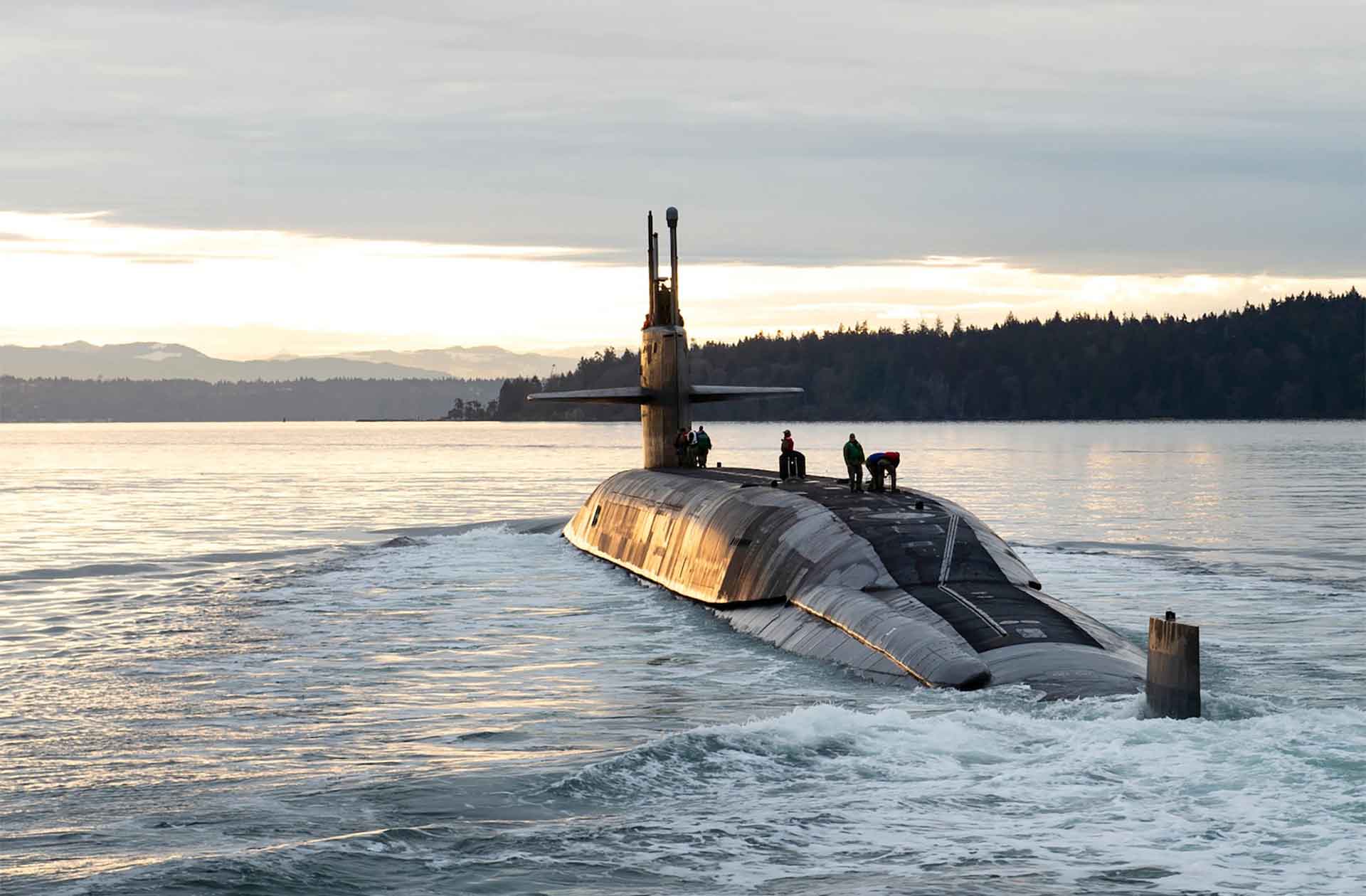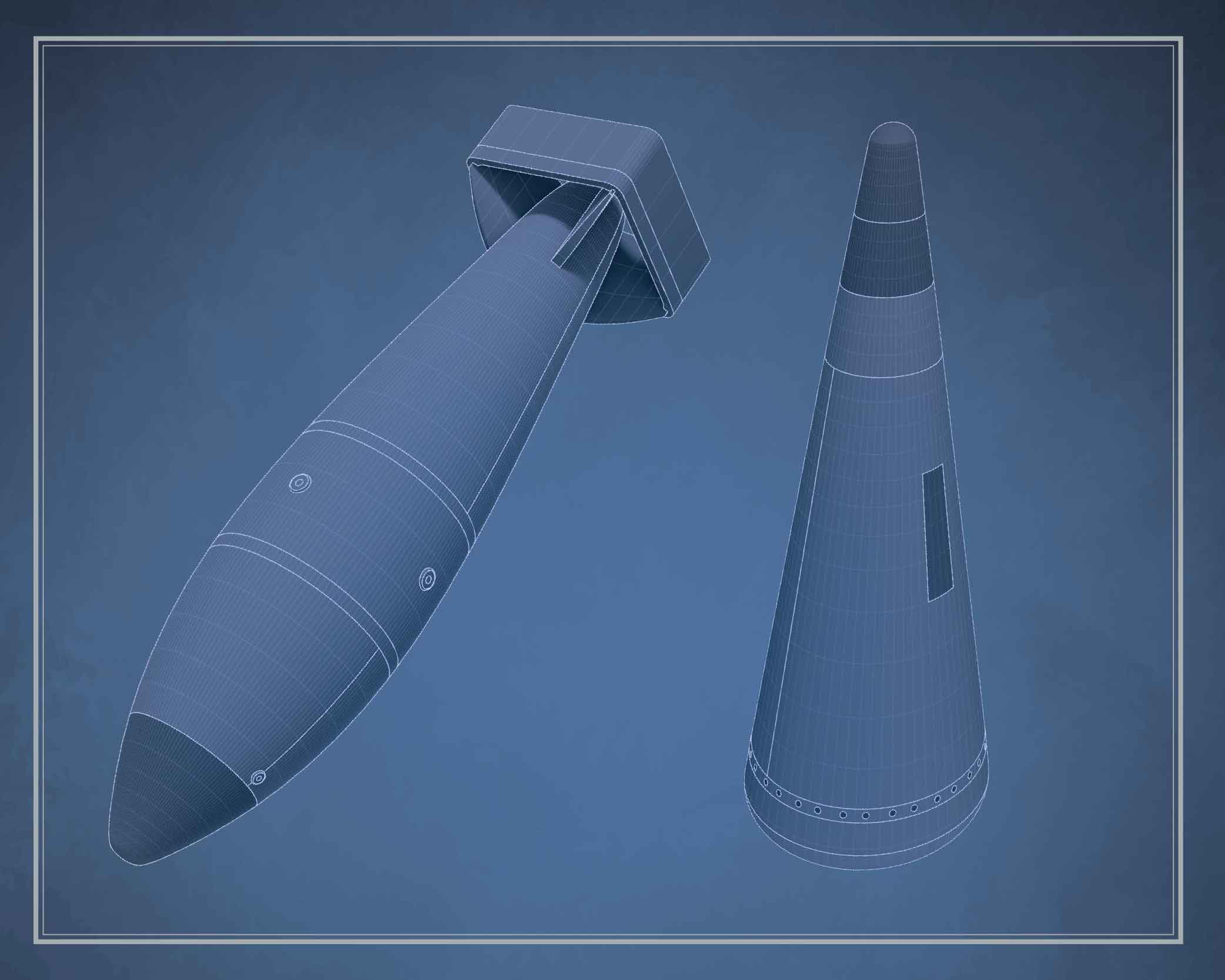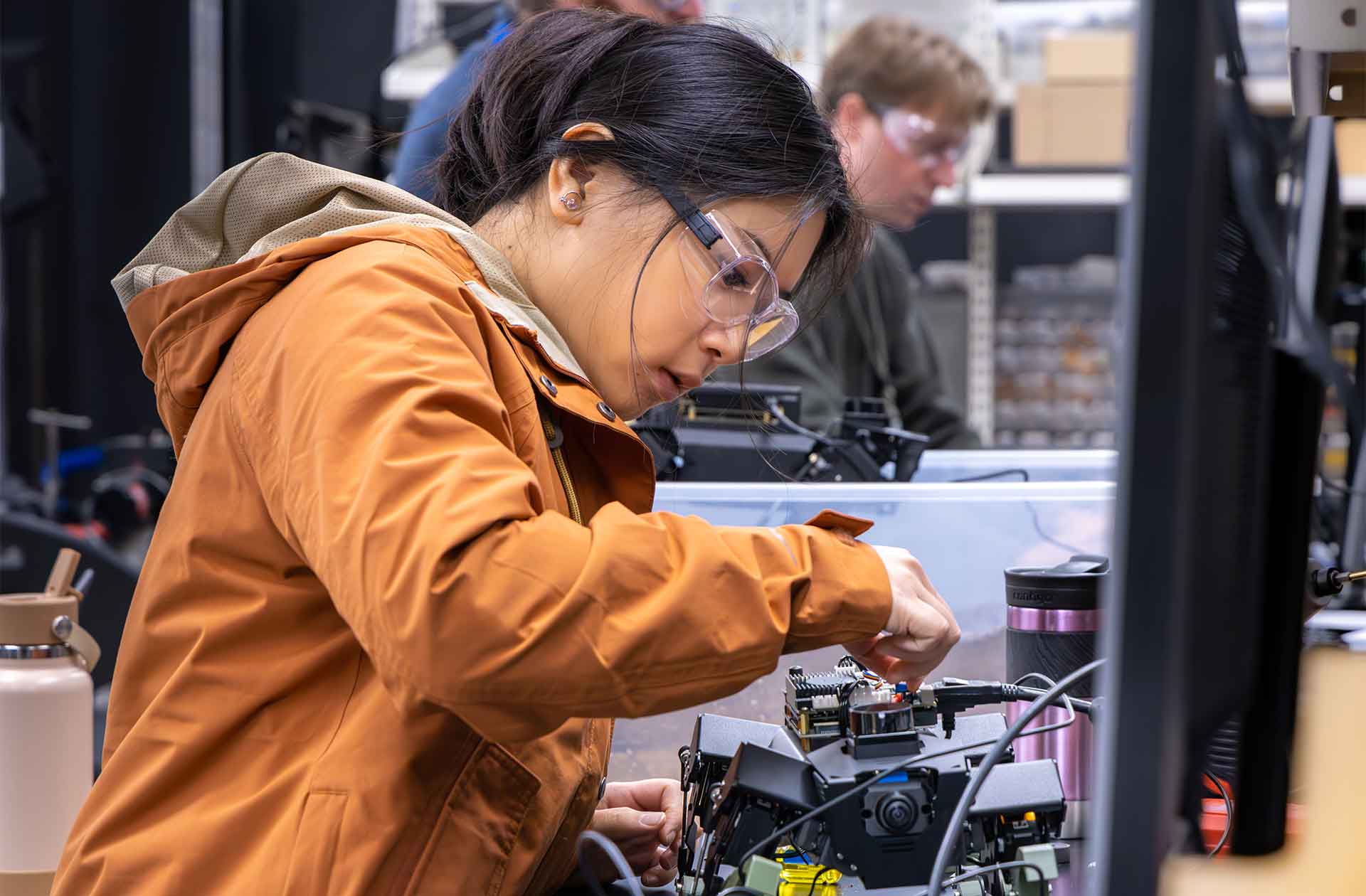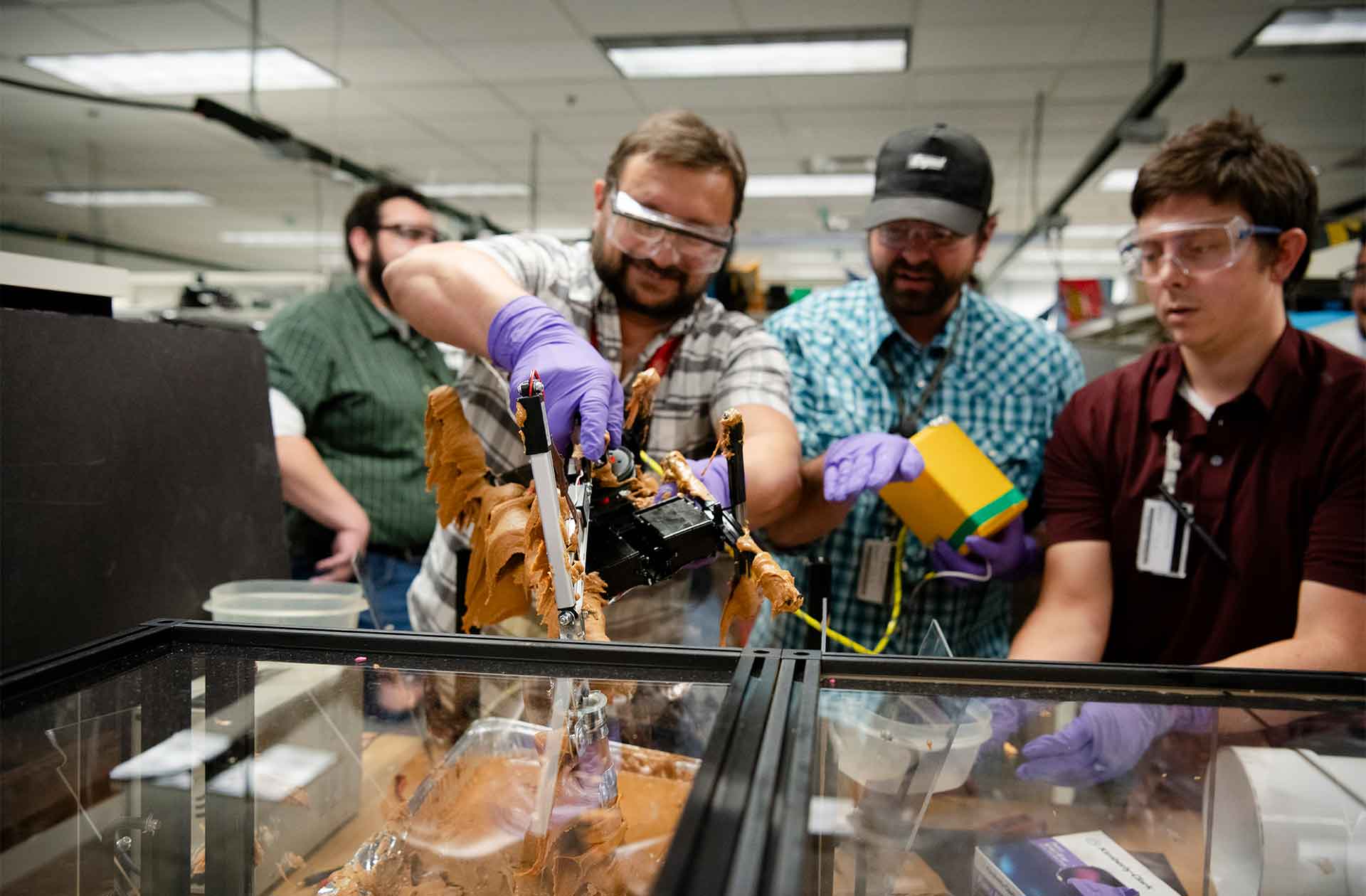Full ahead for the W93
Los Alamos engineers help design a new warhead for submarine-launched ballistic missiles.
- Whitney Spivey, Editor

The year 2020 was unprecedented in many ways—from the global disruption caused by the COVID-19 pandemic to a major milestone in U.S. national security: For the first time in nearly 30 years, the United States began developing a new nuclear weapon.
This new weapon, designated the W93, is the 93rd nuclear weapons design ever considered by the United States. The warhead is being developed alongside a new reentry body, the conical flight vehicle that carries the weapon to its target. This reentry body, known as the Mark 7 (Mk7), will also be used by the United Kingdom, continuing a long-standing partnership between the two countries.
As the W93 and Mk7 progress through the nuclear weapons life cycle, they are expected to eventually arm submarine-launched ballistic missiles aboard the U.S. Navy’s Ohio-class submarines, likely starting in the mid-2030s. Later, as the Navy transitions to the newer Columbia-class submarines, the W93 will be deployed on those platforms.
The W93 design leverages previously tested nuclear components, updated with modern manufacturing techniques and advanced materials. Los Alamos National Laboratory is playing a central role in this effort: designing the W93’s nuclear explosive package and several nonnuclear components.
At the heart of this project is the Lab’s W93 Systems Development and Realization group (aka Q-20), which is part of the Weapons Engineering associate directorate. The group—which includes both engineers and scientists—oversees development through each life cycle phase, collaborating closely with partners to ensure the design meets mission and program requirements.

Q-20 Group Leader Justin Scott notes the importance of having a diverse team. “Stereotypically, engineers care about getting a real product that works, and scientists care about the theoretical basis behind it,” he says. “In practice, I find that both scientists and engineers recognize that fielding an actual warhead requires balancing those factors. Having multiple perspectives allows us to decide when the theoretical understanding will yield a better solution versus when we need to decide something now, given the limited information available to keep the program on track. Striking the proper balance is the art of systems engineering.”
In March 2025, the W93/Mk7 weapon system successfully completed Phase 2 of the nuclear weapons development process. This phase focused on evaluating feasibility and refining design options. It included a comprehensive analysis of alternatives and culminated in key deliverables: a Phase 2 report, draft military characteristics, and a draft stockpile-to-target sequence—a detailed description of the physical conditions a weapon must endure from storage to detonation.
Following Phase 2 is Phase 2A, which sharpens the design definition and outlines development and qualification plans, production requirements, and life cycle cost estimates. “At the end of the Phase 2A,” Scott explains, “the Nuclear Weapons Council reviews the technical progress and the cost report and decides whether to authorize the program to enter Phase 3: Development Engineering.”
Scott says that advancing through the phase process—and overcoming obstacles along the way—is exciting. “Working with an excellent team to figure out solutions to technical and programmatic challenges is really motivating,” he says. “This is the United States’ first new warhead and new reentry body design in decades. It is exciting to be part of engineering a system that will be the next enduring warhead for the U.S. Navy.” ★








